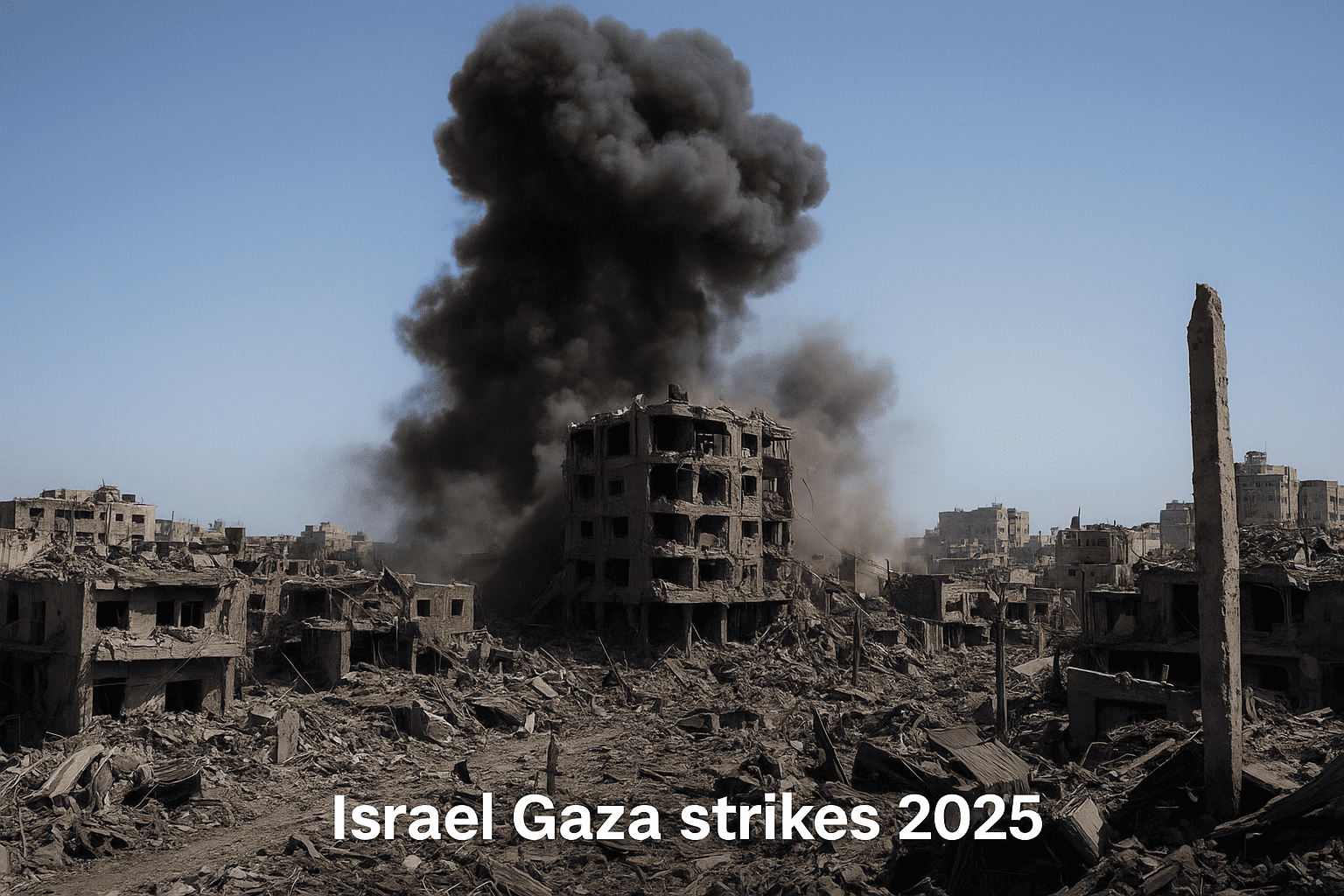The Israel Gaza strikes 2025 have escalated into one of the deadliest periods of the nearly two-year conflict, leaving 123 dead in the past 24 hours alone. Gaza health officials report widespread destruction, including civilian homes in Khan Younis, indiscriminate gunfire in central Gaza, and deaths from starvation. Tanks, artillery, and airstrikes have intensified in preparation for a planned ground operation, while humanitarian aid struggles to reach those trapped under siege. These events mark a critical juncture, exposing both the human toll of military strategies and the failures of the international community to intervene effectively.
Context: Mainstream Narrative
The Israeli government presents its operations as defensive and targeted against Hamas militants, framing the Gaza strikes as precise measures to protect Israeli civilians. International media coverage often echoes this framing, emphasizing military rationale and the challenges of urban warfare. Aid truck deliveries through border crossings are highlighted as proof of humanitarian consideration. According to Reuters, Egyptian mediators have engaged with Hamas to facilitate limited negotiations, lending an impression of ongoing diplomatic efforts.
Official narratives assert that civilian casualties, while tragic, are unavoidable in such operations. Israel’s technological superiority and claimed intelligence accuracy are presented as mitigating factors, suggesting that the military is minimizing unnecessary harm. Mainstream reports largely treat deaths caused by hunger or infrastructural collapse as peripheral, focusing instead on immediate casualties from military engagement.
Oppositional Argument: Why the Mainstream is Misleading
The mainstream narrative obscures the true scale and nature of civilian suffering. Israel Gaza strikes 2025 are far from surgical: tanks flatten homes, snipers target aid-seekers, and starvation kills children in besieged areas. Presenting Hamas as the sole aggressor ignores the vast asymmetry of power, resources, and technology.
The ethical implications are stark. Even when operations are framed as “targeted,” civilian neighborhoods bear the brunt of destruction. Starvation deaths in central Gaza demonstrate a failure of both military and political strategy: the siege itself constitutes collective punishment prohibited under international law. Portraying aid access as sufficient ignores bureaucratic and logistical barriers that delay life-saving resources.
Repeated focus on precision operations risks normalizing civilian suffering as collateral. In reality, these strikes reveal systemic negligence and strategic calculations that prioritize military goals over human lives.
Analytical Breakdown: Causes and Consequences
The lethal intensification of Israel Gaza strikes 2025 arises from several interlocking factors:
- Military Strategy and Escalation Israel’s plan for a ground offensive in Gaza requires softening potential resistance, which increases exposure to civilian areas. Urban warfare in densely populated neighborhoods magnifies casualties.
- Blockade and Starvation Years of blockade have created widespread food insecurity. The death of eight civilians, including children, from hunger in just 24 hours underscores the lethal effect of these policies.
- Humanitarian Constraints Limited and delayed aid deliveries exacerbate suffering. The reliance on crossings and external mediation slows critical interventions, leaving vulnerable populations without shelter, water, or food.
- Political Deadlock Diplomatic negotiations, mediated by Egypt, remain inconclusive. The lack of progress contributes to continued military escalation and perpetuates the cycle of violence.
Historical parallels highlight the consequences of protracted urban conflict. Gaza’s experience mirrors other densely populated warzones where technological superiority does not prevent massive civilian casualties. The combined effect of siege, bombardment, and restricted humanitarian aid produces a crisis far beyond the immediate battlefield.
Human Perspective: Civilian Impact
The human cost of the strikes is both immediate and enduring. Residents of Khan Younis describe homes reduced to rubble, families trapped under debris, and neighbors killed before aid could arrive. In central Gaza, civilians lining up for basic provisions are subjected to gunfire. Children die from starvation, not as unintended collateral, but as a consequence of sustained siege and restricted humanitarian access.
One family, trapped for days without food or water, reported that local hospitals were overwhelmed, with no resources left to treat the wounded. These narratives emphasize the disconnect between official statements and lived reality. Each casualty represents not only a personal tragedy but a profound failure of accountability and governance.
Counterarguments
Supporters of Israel argue that strikes are necessary to neutralize Hamas and protect Israeli citizens. They claim civilian deaths are unfortunate but unavoidable in urban combat, and that military technology reduces collateral damage compared to previous conflicts.
However, eyewitness accounts, health ministry reports, and humanitarian data challenge this position. The deaths of starving children, indiscriminate shootings at aid-seekers, and the destruction of civilian infrastructure indicate that the strategy disproportionately harms non-combatants. Claims of precision and responsibility cannot reconcile with the tangible suffering reported on the ground.
Conclusion: Accountability and Urgency
Israel Gaza strikes 2025 expose the ethical and humanitarian crisis of modern urban warfare. Beyond military objectives, civilian safety and humanitarian access must be prioritized. The international community cannot continue to frame these operations as narrowly targeted or ethically neutral.
Immediate steps include ensuring unfettered humanitarian corridors, monitoring compliance with international law, and increasing diplomatic pressure to halt indiscriminate bombardment. Without action, the cycle of death, starvation, and trauma will continue, leaving Gaza’s population in an unending crisis while global narratives obscure reality.
This is not merely a military conflict—it is a test of accountability, ethics, and global responsibility.
External Links
65 views






